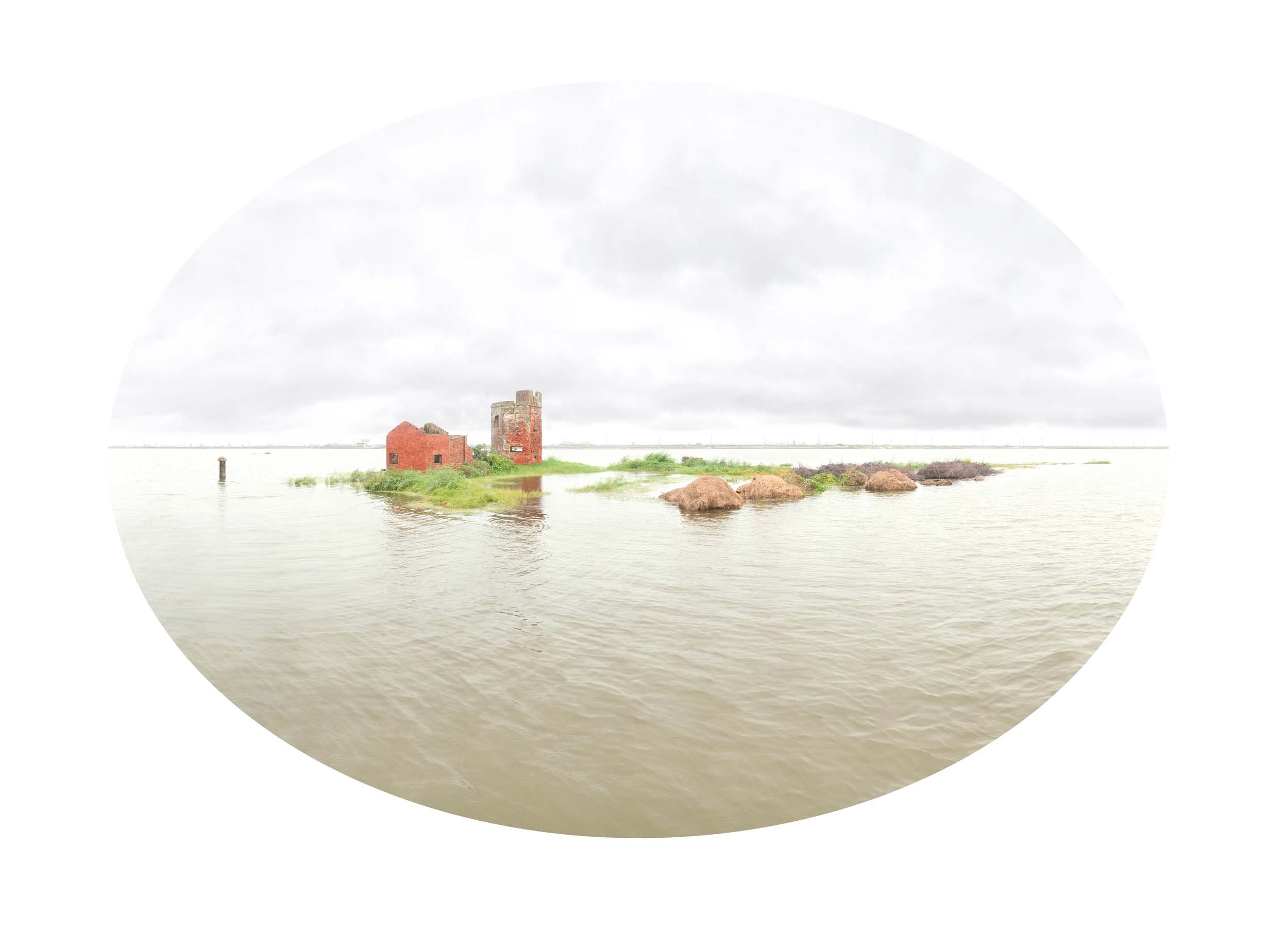Island Project II
Submerged Beauty of Formosa 2014-2021
The Submerged Beauty of Formosa—Part II of “The Island Project”—is a series of images depicting man-made structures immersed in water along the coasts of Taiwan. In 2014, Yang Shun-Fa began his photographic field studies along the Taiwanese coastline. When he first saw these brick houses amid fishponds in Chiayi County, he wondered: “Why would anyone build their house in the water?” After extensive research, he realized that the sight is a result of human behavior, as well as that of climate change. Overdraft of groundwater and the rising sea level have caused land subsidence and seawater intrusion, both of which made these houses uninhabitable, and the land unusable.
The deserted structures are the consequences of human irreverence towards nature; they also stand in for Taiwan’s situation in international relations. To Yang, they are as much a warning as a metaphor: the coastal residents’ way of living is disappearing, and Taiwan continues to struggle internationally. He is eager to reveal this situation with his work. Only this time, compared to his earlier works, he chooses to be less straightforward with his style. He draws the viewers in with meticulously produced “picturesque” images and confronts them with the grim reality that hides within.
Additionally, Yang fuels the Mandarin title of The Submerged Beauty of Formosa –“Taiwan Shui Mo”—with a linguistic twist, with which he raises 3 points: First, he implies that Taiwan has sunken (水沒), environmentally and politically. Second, he refers to the form and aesthetics of ink wash paintings (水墨) in his choice of presentation of these images. Lastly, he asks the question: “Is Taiwan beautiful?” (“美嗎?”), which sounds similar to “水沒” and “水墨” when pronounced in the Taiwanese dialect. And the answer is for the audience to contemplate.
海島計畫 2
台灣水沒 2014-2021
《台灣水沒》是楊順發自2014年起在台灣沿海所拍攝的一系列淹沒在水裡的人造建築物。此系列提出人類破壞自然環境之後,因為地層下陷、海岸線侵蝕等緣故所造成的後果,以及相應之特殊地理景觀。是什麼原因,讓房子從陸地「走向」海中,變成眼前所見之景況?人的行為造成了海岸線發生不可逆的改變。此一景象暗喻著人類不察的危機與教訓,以及經由時間沈澱過後,景觀本身散發出的悲涼氛圍。
此系列標題取「水沒」的諧音,表示三層意義:水沒,即被水淹沒;傳統「水墨」畫的意象;以及用台語發音的:台灣「嫷」沒?(台灣美嗎?)三者分別點出此系列創作的題材、使用的攝影影像形式與技法,以及作品本身更深遠的提問。透過攝影影像的拼貼技法,作品呈現與本身所隱含之嚴肅議題相對立的柔美質感。「台灣美嗎?」藝術家以此提問,對「土地」寄以惆悵的相思之情,同時對生活在這塊土地上的人們發出警訊。











